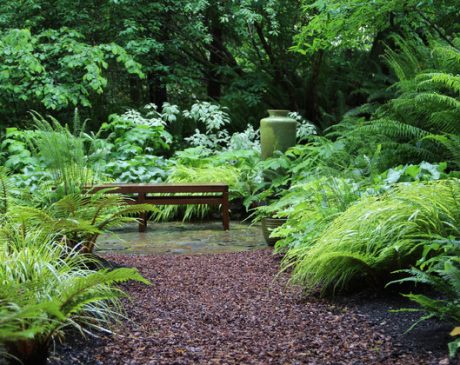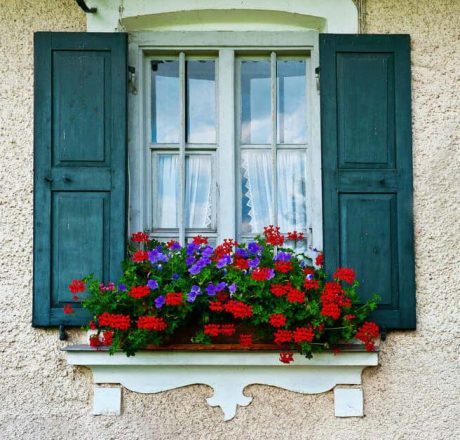How to Level a Yard and 5 Reasons You Should Do It
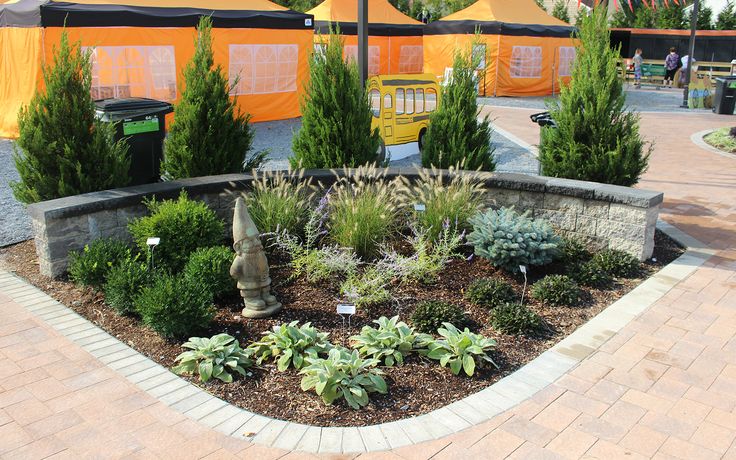
If you find yourself gazing out your yard, only to be met with a landscape that’s more lumpy and bumpy than the serene expanse of green you envision. If so, you may be wondering how to level a yard and why it matters. Leveling a yard is not only important for making your lawn look beautiful and well-maintained, but for the umpty benefits you get.
Leveling your yard means taking a step towards improving water drainage, preventing soil erosion, and promoting healthier grass growth.
This comprehensive blog provides you with step-by-step guidance and valuable tips to ensure your lawn becomes the envy of the neighborhood.
How to Level a Yard
Leveling a yard involved two most important criteria: Size and severity of the unlevelness of the yard.
The method involved in handling the unlevelled areas differs drastically. For instance, if there are small depressions or bumps in the lawn, you can use a topdressing mix to fill in or scrape away the uneven areas.
In contrast, for larger or deeper areas that need the utmost attention of leveling, you can use stakes, strings, and a line level to mark the area and determine how much fill you need. Then you can use a shovel, rake, tiller, or lawn roller to dig up or add soil until it reaches the desired level.
Here’s a bonus tip: for even pavers or flagstone paths, you can use leveling sand to adjust the height and stability of the stones.
Now let’s dive into the detailed guide on how to level a yard:
Step 1: Mow the Lawn
Why start the whole procedure by mowing your lawn? Because mowing the lawn helps you see the uneven areas easily and work on it.
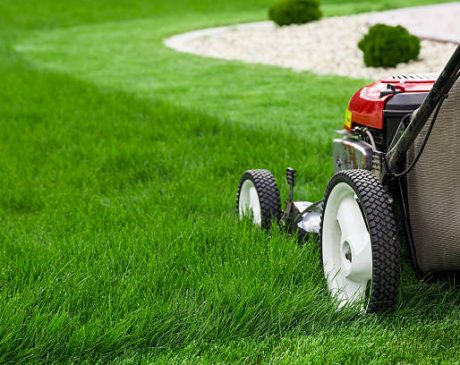
Cut the lawn short, but not so short that you scalp it. There’s a risk of drying out the grass if you cut it so that grass blade stems become visible.
Step 2: Thatch the Lawn’s Roots
Thatch means the decaying grass and other organic matter that grows at the surface level of the lawn. It’s crucial to examine the amount of thatch at the lawn’s roots, then detach it as needed.
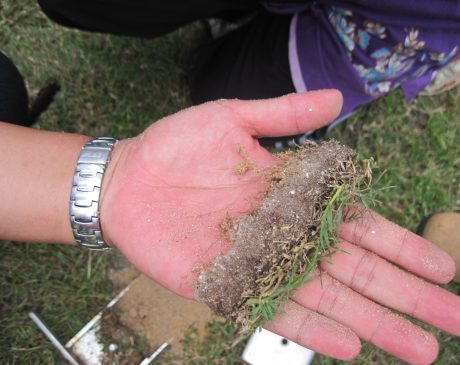
If the thatch is more than a half-inch, then it means your lawn isn’t getting enough water. Which eventually causes compaction and prevents nutrients from reaching the grassroots. To remove the excess thatch, you can use a detaching machine or a thatch rake and work to remove the excess.
Step 3: Top Dressing Your Lawn
Top dressing is a mix of sand, topsoil, and compost. This is used to level the small depressions or bumps in your lawn.
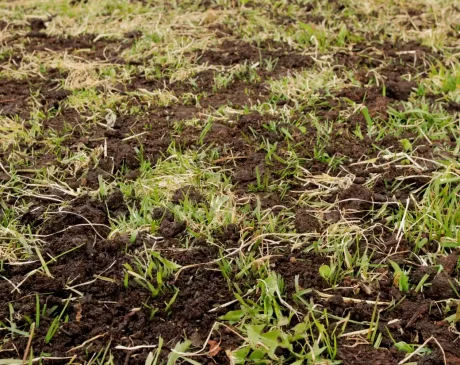
The sand in the mix will keep the lawn level, while the soil and compost will add nutrients to the grass. If you’re unsure of making your own by mixing equal parts of sand, topsoil, and compost, you can buy the ready-made top dressing mix from the garden center.
Step 4: Check for the Low and High Spots
To level small areas of your lawn, you can use a shovel or a rake to fill in low spots with the topdressing mix. And the high spots need to be scraped away.
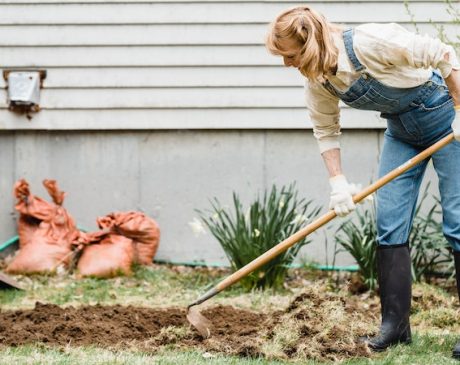
While filling the low spots, make sure to spread the mix evenly and avoid resting mounds or hollows. If you’d like to press down the soil and make it compact, you can use a lawn roller.
Step 5: Mark the Area and Measure the Highs and Lows
This step is crucial to level the larger or deeper areas of your yard. Follow the below steps to mark the areas with stakes and string and measure the highs and lows with a line level.
- Drive a stake into the ground next to your home’s foundation and another one about 8 feet away.
- Tie a string around the stake closest to the foundation and stretch out until it is taut.
- Now attach a line level to the string should slope away from your home at a rate of about 1 inch 8 feet to ensure proper drainage.
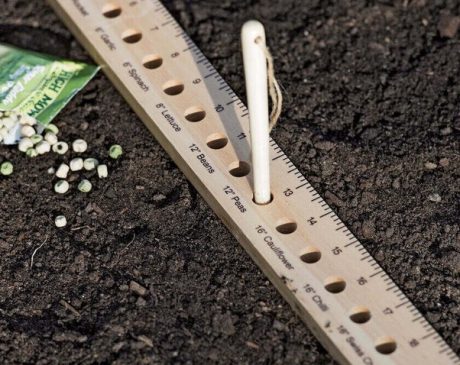
Repeat the 3 steps for the other sides of the yard you want to level with the same string level. You can also run a string across the yard between two posts to make a level line.
As you string the level along the line, watch the bubble on the line level’s corner. If it is in between the two lines, the ground is level. If it is shifted to the right or left of either line, the ground is uneven.
Take measurements every 4 – 8 feet as you go around the perimeter of the area, marking which areas will need to be raised or lowered later on.
Step 6: Dig Up or Add Soil
To level larger areas, dig up or add soil until it reaches the desired level. You can use a shovel, rake, or tiller to dip up high areas or add soil to low areas.
Buy a new fill first from the nearby garden center or use the same kind of first as the soil surrounding the low areas.
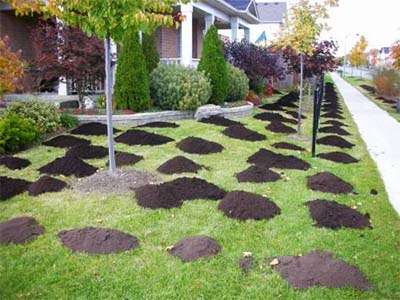
Step 7: Adjust Pavers or Flagstone Paths
Uneven pavers or flagstone paths need leveling sand to adjust their height and stability. Lift up each paver or stone and add or remove leveling sand underneath until it is level with the surrounding ones.
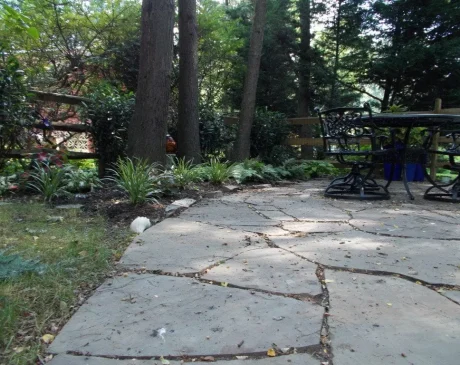
5 Reasons to Level a Yard
You have now explored the reasons for how to level a yard; it’s time to know why to level a yard.
1. Preventing Water Damage
Not leveling a yard could water damage your home’s foundation or basement. Check for your yard slopes; if it’s towards your home, rainwater can pool around and weaken the foundation of your home, causing flooding, rotting, and cracking.
2. Avoiding Lawn Disease and Pest Infestation
Yards with low spots collect water; they can create a breeding ground for lawn diseases such as fungus and mold and pests like mosquitoes and grubs.
These can damage your grass and plants and pose health risks for you and your family.
3. Enhancing Lawn Look
A level yard is more pleasing to the eye than a bumpy one. Most house owners take pride in caring about the property and maintaining their yard for a better appearance. Even if you are looking to sell your house in the future, a leveled yard might increase the selling value.
4. Improving Safety and Fun for Outdoor Activities
A leveled yard is safer for your kid’s or even adult’s outdoor activities. A level yard is safer and more enjoyable for playing games, hosting parties, relaxing, or gardening.
You don’t need to worry about tripping or spraining your ankles on uneven surfaces. If you’re planning to add patios, fire pits, or flower beds, a leveled yard is nice to have.
5. Lawn Care and Maintenance
A level yard is easier to mow, water, rake, fertilize, and weed. This also ensures an even growth and distribution of grass and pants across your yard.
Tools Required When Levelling a Yard
You will need the following basic tools and materials to level your yard:
- Carpenter’s level and stakes to mark the area, level, and measure the highs and lows of your yard.
- Dethatching machine or thatch rake to remove excess thatch.
- Lawnmower to cut grass before leveling.
- Shovel, rake, tiller, or lawn roller to dig up or add soil to level the high and low areas of your yard.
- Topdressing mix to fill in or scrape away the uneven areas of your lawn.
- Leveling sand is used to adjust the height and stability of uneven paths
Tips and Tricks
This is your bonus on your search for “how to level a yard.” The following tips and tricks can help you make your leveling process easier and more effective.
- Choose a Dry Day- Leveling will be easier if you avoid working with wet or muddy soil.
- Water Your Lawn Lightly After Levelling – Watering the lawn lightly helps the soil settle and the grass grow. Overwatering might cause erosion and might wash away the top dressing mix or leveling sand.
- Use a Quality Top Dressing Mix or Levelling Sand – Ensure your top dressing mix is free of weeds, rocks, or debris. This helps with a smooth and even surface for your lawn or path.
- Be Gentle With Your Lawn – Leveling your yard might cause stress to your grass and plants. It’s best to give them some time to recover and avoid walking or driving on them until they are fully established.
Conclusion
Leveling a yard is often considered a difficult task, which it isn’t. If you have the right tools and follow the right steps, you can enjoy multiple benefits. Leveling a yard is a worthwhile project to transform your outdoor space and protect your home.
Turn your outdoor space into a haven of beauty, functionality, and relaxation by trying the methods and tips mentioned above.
Hoping this article helped you understand various reasons why leveling your yard is a decision you won’t regret. If you have any questions or comments, please feel free to share them below. Happy leveling!



